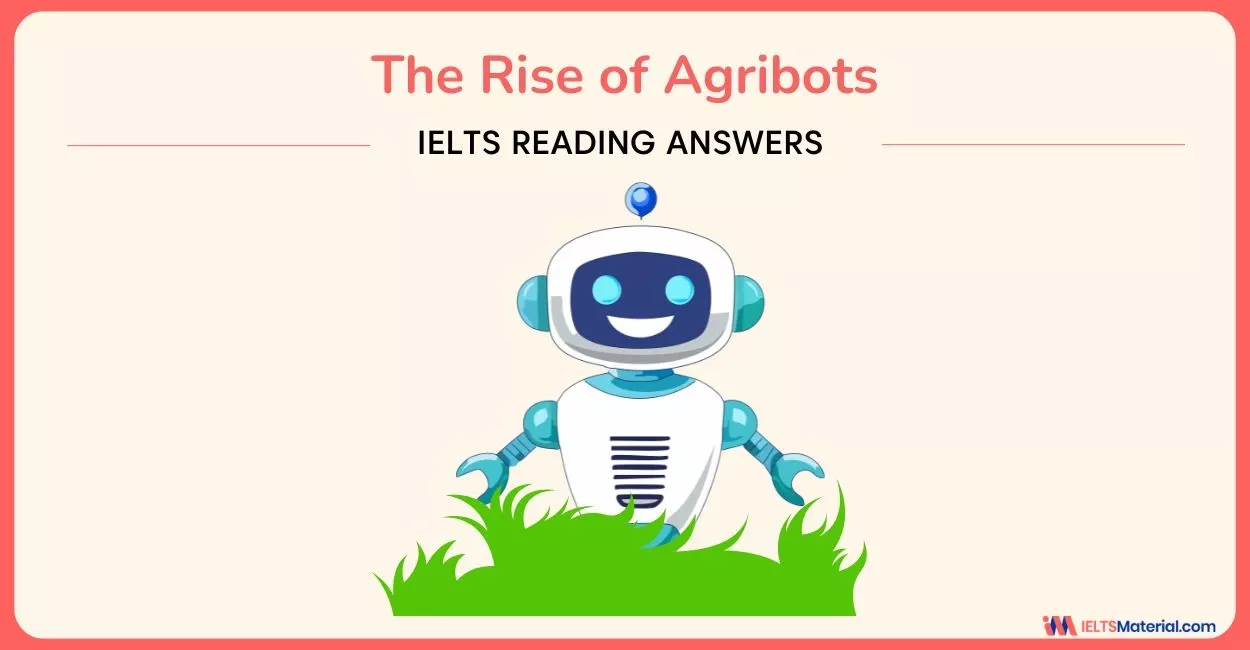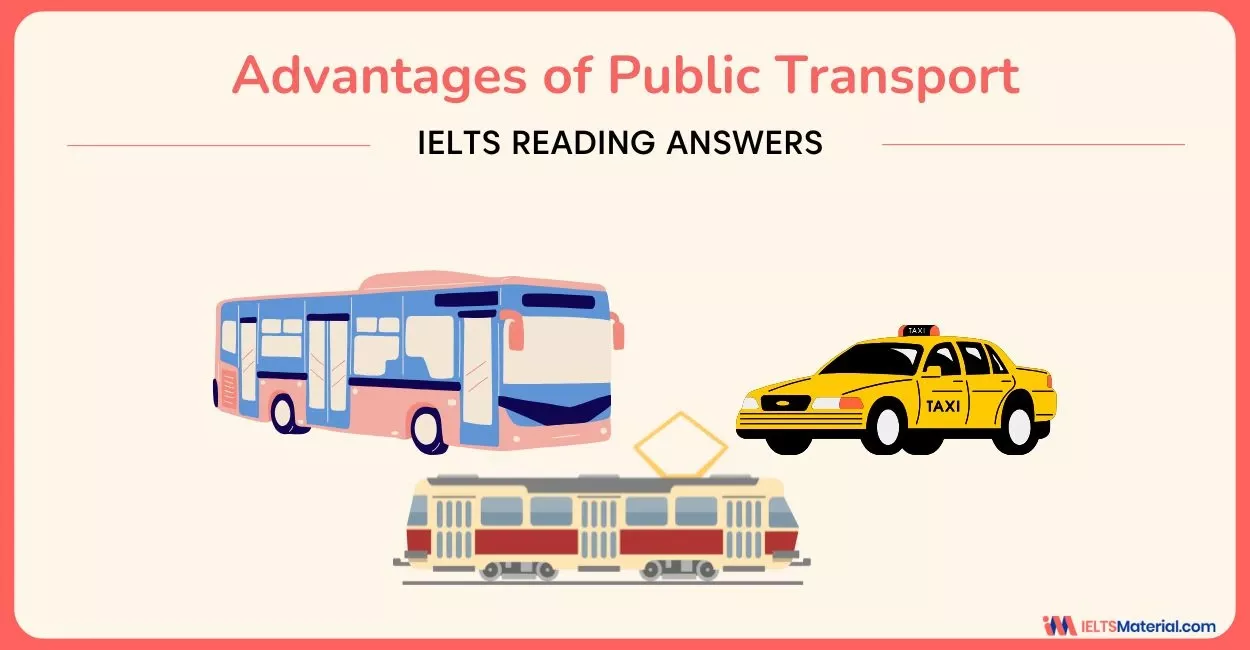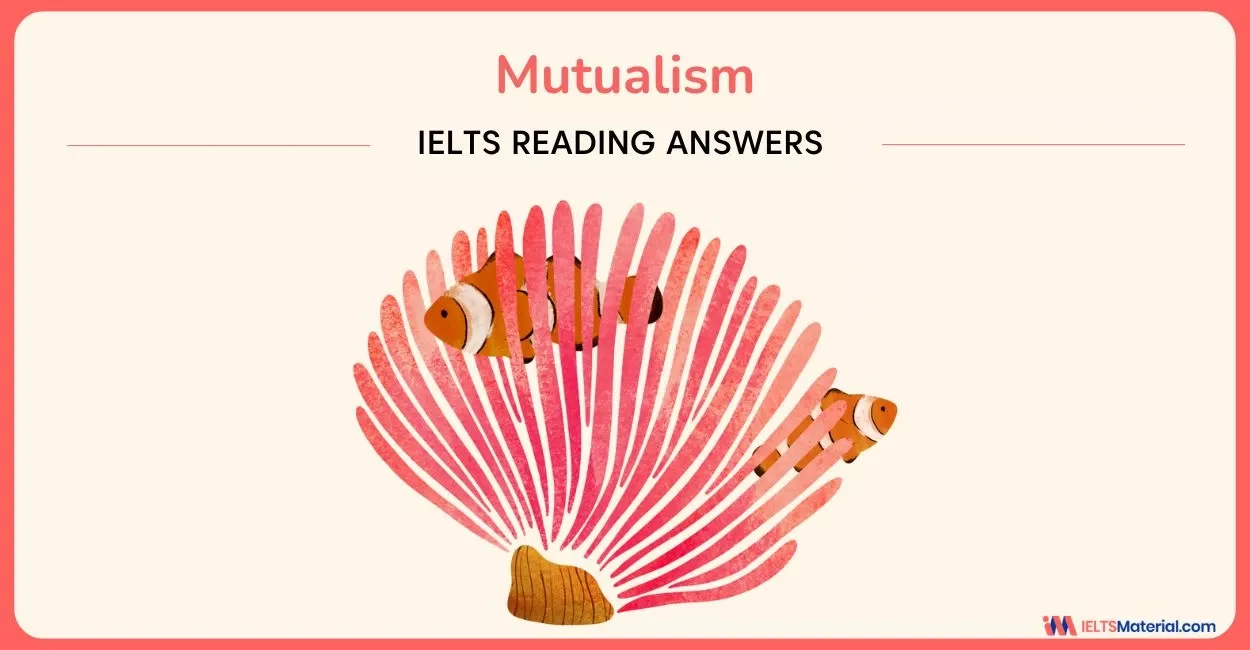Mutualism - IELTS Reading Answers
13 min read
Updated On
-
Copy link
Boost your IELTS reading score by using the ‘Mutualism’ IELTS reading passage and its answer key. Additionally, learn how to deal with different IELTS reading questions with the tips to refine your reading strategy and achieve your desired reading score.
Table of Contents

Limited-Time Offer : Access a FREE 10-Day IELTS Study Plan!
Everyone has specific difficulties - may be True/False/Not Given, or Matching questions. Practicing single passages like ‘Mutualism IELTS Reading Answers’ lets you isolate these weaknesses and work on them independently. By choosing passages that challenge your problem areas, you can make faster and more focused improvements.
Solve the questions with the passage, ‘Mutualism Reading Answers’ from one of the IELTS Reading recent actual tests, check your answers against the provided location and explanations, and go through the tips to improve your performance in the reading module.
Passage for Mutualism IELTS Reading Answers
Given below is the ‘Mutualism' passage that you can go through and prepare yourself for the reading section with this IELTS Reading practice test.
You should spend about 20 minutes on Questions 13-26, which are based on the Reading Passage below.
Mutualism
Mutualism is an association between individuals belonging to two different species that benefit each other. There are numerous examples of this: the way flowers rely on insects to pollinate them or even how we humans rely on bacteria within our digestive system to break down our food.
One of the most visible forms of mutualism can be found in the pampas grasslands of Argentina, where organisms belonging to two different species work together not only to benefit each other but also to change the ecosystem around them. Grasscutter ants have been instrumental in shaping the landscape of the pampas grasslands – in fact, the landscape has been created almost entirely by the ants. Although they are only 1.5 cm long, they are one of the few creatures capable of shaping their own environment and one of the few living creatures apart from humans that cultivate their own food. The ants harvest the grasslands to supply their colony with grass. Each year over 0.5 tonnes of grass are harvested by a single colony. However, grass consists largely of cellulose, which the ants cannot digest, so the ants have developed a mutualistic relationship with an organism that can digest it. Deep inside the ant nests is a fungus that is able to grow on the compost produced by the grass. The fungus is unique to the habitat inside the ants’ nest and it produces edible gardens for the ants. The relationship is so successful that a single colony can consist of up to eight million ants.
One of the reasons for the ants’ success is the sophistication of their social organisation: they are all members of a single society but there is a division of labour within it. There are three main castes: the queen, the soldiers ( or majors) and the worker ants. The worker ants are further divided into categories: the minims (the smallest ants), the minors and the mediae, each with different duties. The soldier ants defend the colony against physical threats. They also clear the paths for the other workers. The mediae are the foraging ants that look for grass to cut up and take back to the nest. Once the grass has been harvested, the forager ants carry it to the nest by following a chemical trail. But often they are not alone: minims ride on them or on the grass in order to protect them from a particular species of fly that parasitises the foragers. As soon as the grass leaves arrive at the nest, the forager ants pass them to smaller gardener ants, which cut up the leaves into smaller and smaller pieces until they are small enough to feed to the fungus. They then pass the tiny pieces on to the smallest ants, which feed the grass to the fungus and tend the fungal gardens.
A very important function of the smallest ants is to keep the fungus healthy. They do this by carefully inspecting each piece of grass leaf and making sure that it is free from other fungi or pests. In fact, the mutualistic relationship is supplemented by bacteria that live on the ants and give out chemicals that kill microbes harmful to the fungus. The relationship between the fungus and the ants is so developed that the grasscutter ants are sensitive to the fungus’s reaction to different plants; if a particular plant is poisonous to the fungus, the ants no longer collect it. Waste disposal is another serious concern. Waste is collected by waste-disposer ants, which tend to be the older ants, thus ensuring that the younger ones can tend to other work. The waste-disposer ants remove waste (including dead ants) from the nest and take it underground into the deepest tunnels, where they aid its decomposition by moving it around.
Because the fungus at the heart of the colony nest is a living and breathing organism, it produces carbon dioxide – a very toxic gas. The ant nest is a masterpiece of construction, carefully made to keep air circulating in order to prevent suffocation through the build-up of carbon dioxide. The nest has two methods of air circulation. Firstly, the hot air produced by the fungal gardens at the centre of the nest flows up through a central tunnel and draws in cooler, cleaner air from the outside passages. The second method involves a series of towers at the top of the nest. When the wind blows over the towers, it draws out old air and fresh air rushes into the nest from nest holes that extend outwards from the main nest. A nest can measure up to 30 metres across, and other mounds extend away from the central nest for up to 80 metres. As the nest also dominates the underground world, often extending seven metres down, the rapid flow of air through the nest is essential to the health of the inhabitants and their garden.
Discover fast strategies to master such passages in under 20 minutes.
Join our FREE IELTS webinars!
Questions for Mutualism Reading Answers
The Academic passage, Mutualism, consists of 14 questions. It presents two different IELTS Reading question types. Solving this passage will help you become acquainted with three major IELTS Reading question types with examples.
The question types in this reading passage include:
- IELTS Reading True False Not Given (Q. 13-19)
- IELTS Reading Matching Features (Q. 20-23)
- IELTS Reading Diagram Completion (Q. 24-26)
Questions 13-19
Do the following statements agree with the information given in Reading Passage 2? Write
TRUE if the statement agrees with the information
FALSE if the statement contradicts the information
NOT GIVEN if there is no information on this
13 Grasscutter ants are one of a small group of creatures that use other organisms to produce food.
14 The fungus that grows in the nests of grasscutter ants is not found in any other kind of environment.
15 Grasscutter ants cut the grass into very small pieces so they can eat it.
16 Forager ants are the smallest ants.
17 Grasscutter ants can carry loads much heavier than their body weight.
18 The ants never collect plants that might harm the fungus.
19 The older ants are responsible for getting rid of waste.
Questions 20-23
Classify the following as typical of
A majors
B mediae
C minims
Write the correct letter. A, B or C, next to Questions 20-23.
20 take grass back to the colony
21 protect the colony from invaders
22 make sure the way to the food is clear
23 farm the fungus
Questions 24-26
Label the diagram below using words from the box.
Write the correct letter, A-C, in spaces 24-26.
A fungal gardens
B waste tunnel
C carbon dioxide

Answers and Explanations of Mutualism IELTS Reading Passage
Check out the detailed explanations for the Mutualism reading passage questions given above and get an idea of how to solve them and improve your reading skills for a top IELTS band score.
13 Answer: True
Question type: True/False/Not Given
Answer location: Paragraph 2, line 10 – line 12
Answer explanation: The mentioned line from Paragraph 2 says that “Deep inside the ant nests is a fungus that is able to grow on the compost produced by the grass. The fungus is unique to the habitat inside the ants’ nest and it produces edible gardens for the ants.” As these ants cannot digest the cellulose in the grass, it takes the help of a fungus to produce food for them. Hence the answer is True.
14 Answer: True
Question type: True/False/Not Given
Answer location: Paragraph 1, line 11 – line 12
Answer explanation: The following line from Paragraph 2 states that “The fungus is unique to the habitat inside the ants’ nest and it produces edible gardens for the ants.” The phrase ‘unique to the habitat’ relates the fact that it grows only in the nests of grasscutter ants and is not found in any other kind of environment. Hence the answer is True.
15 Answer: False
Question type: True/False/Not Given
Answer location: Paragraph 3, line 10 – line 11
Answer explanation: The following line from Paragraph B says that “As soon as the grass leaves arrive at the nest, the forager ants pass them to smaller gardener ants, which cut up the leaves into smaller and smaller pieces until they are small enough to feed to the fungus.” This statement points out that the ants do not cut the leaves into smaller pieces so that they can eat it. Rather, it is done to feed the fungus. Hence the answer is False.
Unlock Explanations
16 Answer: False
Question type: True/False/Not Given
Answer location: Paragraph 3, line 3 – line 5
Answer explanation: The specified lines from Paragraph 3 says that “The worker ants are further divided into categories: the minims (the smallest ants), the minors and the mediae, each with different duties.” It means that the forager ants, or the mediae, are the smallest one, but the smallest ants are the minims. Hence the answer is False.
17 Answer: Not Given
Question type: True/False/Not Given
Answer location: N.A.
Answer explanation: As there is no information on whether the grasscutter ants can carry loads much heavier than their body weight, the answer is Not Given.
18 Answer: False
Question type: True/False/Not Given
Answer location: Paragraph 4, line 4 – line 6
Answer explanation: The quoted lines from Paragraph 4 says that “The relationship between the fungus and the ants is so developed that the grasscutter ants are sensitive to the fungus’s reaction to different plants; if a particular plant is poisonous to the fungus, the ants no longer collect it.” Therefore, it is clear that the ants unknowingly collect plants that might be harmful for the fungus. But once it becomes aware of this factor, it stops collecting it. Hence the answer is False.
19 Answer: True
Question type: True/False/Not Given
Answer location: Paragraph 4, line 7 – line 8
Answer explanation: The mentioned line from Paragraph 4 says that “Waste is collected by waste-disposer ants, which tend to be the older ants, thus ensuring that the younger ones can tend to other work.” It points out that waste collecting and disposing is done by the older ants. Hence the answer is True.
20 Answer: B
Question type: Matching Features
Answer location: Paragraph 3, line 6 – line 7
Answer explanation: The following line from Paragraph B says that “The mediae are the foraging ants that look for grass to cut up and take back to the nest.” So, it is the task of the mediae or the forager ants to take grass back to the colony/nest. Hence the answer is B.
21 Answer: A
Question type: Matching Features
Answer location: Paragraph 3, line 5
Answer explanation: The following line from Paragraph 3 says that “The soldier ants defend the colony against physical threats.” It is clear from this sentence that the majors or the soldier ants protect the colony from invaders or physical threats. Hence the answer is A.
22 Answer: A
Question type: Matching Features
Answer location: Paragraph 3, line 5 – line 6
Answer explanation: The said line from Paragraph 3 says that “They also clear the paths for the other workers.” Here, ‘they’ refers to the soldier ants or the majors who are responsible for protection of the colony as well as making sure the way to the food is clear. Hence the answer is A.
23 Answer: C
Question type: Matching Features
Answer location: Paragraph 3, line 12 – line 13
Answer explanation: The mentioned line from Paragraph 3 says that “They then pass the tiny pieces on to the smallest ants, which feed the grass to the fungus and tend the fungal gardens.” So, it is the smallest ants or the minims who tend to the fungus. Hence the answer is C.
24 Answer: C
Question type: Diagram Completion
Answer location: Paragraph 6, line 2 – line 5
Answer explanation: The mentioned lines from Paragraph 6 states that “The ant nest is a masterpiece of construction, carefully made to keep air circulating in order to prevent suffocation through the build-up of carbon dioxide. The nest has two methods of air circulation. Firstly, the hot air produced by the fungal gardens at the centre of the nest flows up through a central tunnel.” From the diagram we can clearly see that the first blank refers to a pipe in the middle (centre) of the nest and as the text says this central pipe lets out the hot, toxic carbon dioxide created by the fungus. Hence the answer is carbon dioxide (C).
25 Answer: A
Question type: Diagram Completion
Answer location: Paragraph 6, line 1 – line 2
Answer explanation: The following line from Paragraph 6 says that “Because the fungus at the heart of the colony nest is a living and breathing organism, it produces carbon dioxide – a very toxic gas.” As we relate the diagram with the text, we can point out the fungus or the fungal garden is in the middle or heart of the ant colony. Hence the answer is fungal garden (A).
26 Answer: B
Question type: Diagram Completion
Answer location: Paragraph 5, line 9 – line 10
Answer explanation: The specified lines from Paragraph 5 says that “The waste-disposer ants remove waste (including dead ants) from the nest and take it underground into the deepest tunnels, where they aid its decomposition by moving it around.” When we compare the diagram and the text, we can see that it refers to the deep underground tunnels that are meant for waste disposal. Hence the answer is waste tunnels (B).
Learn quick solving tips and reading techniques from experts!
Connect with us through our FREE IELTS online classes!
How to Solve the Question Types in the Mutualism Reading Passage?
Now, let’s check out some IELTS exam preparation tips for achieving a band score of 8+ for each question type in the Mutualism Reading Answers. This will help you learn how to approach each question type effectively.
True/False/Not Given
- Always locate the exact sentence before deciding: Do not rely on memory or general understanding of the passage. For every TFNG statement, locate the specific sentence or lines in the passage that relate to the statement before choosing an answer.
- TRUE requires exact agreement, not similar meaning: Mark TRUE only when the statement directly matches the information in the passage. Paraphrasing is acceptable, but the idea must be the same, as seen in Question 13, where “use other organisms to produce food” matches the fungus-based food system.
- FALSE means the passage clearly says the opposite: Choose FALSE only when the passage directly contradicts the statement. In Question 15, the passage clearly states that grass is cut to feed the fungus, not for ants to eat, which is a direct contradiction.
- NOT GIVEN means the idea is completely missing: Select NOT GIVEN when the passage does not mention the information at all, even indirectly. For Question 17, there is no reference to ants carrying loads heavier than their body weight, so assumptions must be avoided.
- Be careful with absolute words: Words such as never, always, only, and all often signal FALSE answers. In Question 18, the word never is incorrect because ants initially do collect harmful plants before stopping later.
- Match roles, not labels: Do not rely on labels like ‘forager’ or ‘worker’ alone. Always confirm the function described in the passage. This helps avoid errors like Question 16, where the smallest ants are minims, not foragers.
Matching Features
- Read the classification paragraph once carefully: Before answering, read the paragraph that explains the three ant types and their duties fully. This creates a mental map of who does what.
- Focus on verbs in the question: Pay attention to action verbs such as ‘protect’, ‘take’, ‘clear’, ‘farm’. These verbs usually match one specific group described in the text.
- Do not reuse logic—reuse evidence: Even if two roles seem similar, confirm each answer separately from the text. For example, both protecting the colony and clearing paths are done by majors, but each must be verified independently.
- Smallest ants often handle delicate tasks: In passages about insect societies, the smallest group often performs maintenance or farming tasks. This pattern helps identify minims as fungus farmers in Question 23.
Diagram Completion
- Read the diagram title and labels first: Before reading the passage, study the diagram carefully. Identify direction, position, and depth (centre, underground, tunnel, top).
- Match location words with diagram positions: Words like centre, deepest, flows up, underground, and heart of the nest are crucial. These spatial clues directly link text descriptions to diagram parts.
- Track cause-and-effect carefully: When the passage explains why something exists (e.g., carbon dioxide removal), that explanation usually leads directly to a diagram label, as seen in Question 24.
- Use elimination logically: If one label clearly fits the centre (fungal gardens) and another fits deep tunnels (waste tunnel), the remaining option must logically fit the final blank.
- Do not change word forms: Always copy the label exactly as given in the box. IELTS diagram completion does not test grammar flexibility, only accurate identification.
To conclude, completing the reading passage ‘Mutualism’ can help you be IELTS-ready and improve your comprehension skills. To attain a high score on IELTS Reading, there is a need to work on factors like how quickly you read, how well you know the questions already, and your information retrieval skills, as these will be evaluated. So, to crack the reading module in the first go, try solving more of the IELTS Reading topics for General and Academic, and work on your reading skill set.
Useful Links:
- Healthy Intentions - IELTS Reading Answer
- Jargon- IELTS Reading Answers
- The Mozart Effect - IELTS Reading Answers with Explanation
- Ancient Egypt – IELTS Reading Passage with Answers
- Storytelling IELTS Reading Answers
- The Brain And Intelligence - IELTS Reading Answers
- How Your IELTS Reading Band Score is Calculated?
Practice IELTS Reading based on question types

Start Preparing for IELTS: Get Your 10-Day Study Plan Today!
Explore other Reading Actual Tests

Kasturika Samanta

Nehasri Ravishenbagam

Kasturika Samanta

Kasturika Samanta
Recent Articles

Nehasri Ravishenbagam

Haniya Yashfeen

Haniya Yashfeen

Haniya Yashfeen




Post your Comments